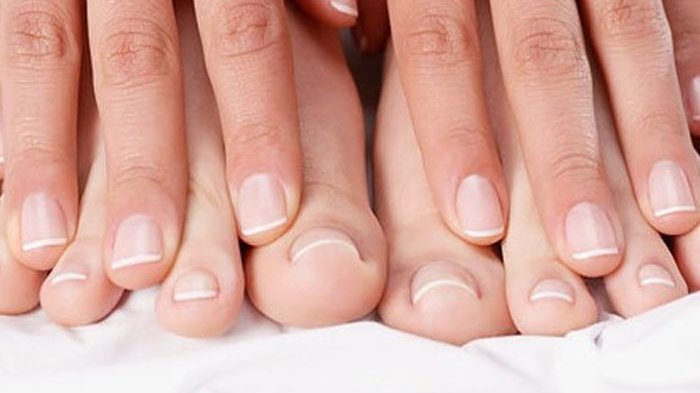Take a close look at your nails. Is it strong and healthy? Or do you see ridges, dents, or areas of unusual color or shape? You can avoid many health problems with proper nail care.
Nails: What’s Normal, What’s Wrong
Your nails — which are composed of layers of a protein called keratin — grow from the area below your cuticles. Healthy nails are smooth, with no holes or grooves. They are uniform in color and consistency and have no spots or discoloration.
Sometimes the nails develop harmless vertical ridges that run from the cuticle to the tip of the nail. Vertical ridges tend to become more prominent with age. Nails can also develop white lines or spots from trauma, but they eventually grow out with the nail.
However, not all nail conditions are normal.
Consult your doctor or dermatologist if you notice:
- Change in nail color, such as discoloration of the entire nail or a dark streak under the nail
- Changes in nail shape, such as curved nails
- Thin or thicken nails
- Separate the nail from the surrounding skin
- Bleeding around the nail
- Swelling or pain around the nail
- Nails are hard to grow long, very slow
How to take care of nails?
To keep your nails looking their best:
- Keep nails dry and clean. This prevents bacteria from growing under your nails. Repeated or prolonged exposure to water can contribute to split nails. Wear cotton-lined rubber gloves when washing dishes, cleaning or using harsh chemicals.
- Practice good nail hygiene. Use sharp nail clippers or clippers. Trim your nails straight through, then round the ends in a gentle curve.
- Use a moisturizer. When you use hand cream, rub the lotion into your nails and cuticles.
- Apply a protective layer. Applying a nail hardener can help strengthen nails.
- Ask your doctor about biotin. Some research suggests that the nutritional supplement biotin can help weak or brittle nails.
Nail Care: Don’t Do It
To prevent nail damage, don’t:
- Bite your nails or pick at your cuticles. These habits can damage the nail bed. Even a small cut along your nail can allow bacteria or fungi to enter and cause an infection.
- Drag the scratch. You can hurt your hands more, use scissors or a nail clipper to remove the bamboo shoots
- Use harsh nail care products. Limit the use of nail polish remover. When using nail polish remover, choose an acetone-free formula.
- Ignore the problem. If you have a nail problem that doesn’t seem to go away on its own or is associated with other signs and symptoms, consult your doctor or dermatologist for an evaluation.
A note about fingernails and toenails
If you rely on fingernails or toenails for healthy nails, keep a few things in mind. Stick to salons that show current state licensing and only work with technicians. Don’t let your cuticles be cut off – they seal the skin to the nail plate, so removal can lead to a nail infection. Also, make sure your manicurist properly disinfects all tools used in your procedure to prevent the spread of infection.
You can also ask how the foot bath is cleaned. Ideally, the pedicure should be cleaned after each client
It’s easy to neglect your nails – but taking some basic steps can keep your nails healthy and strong.








